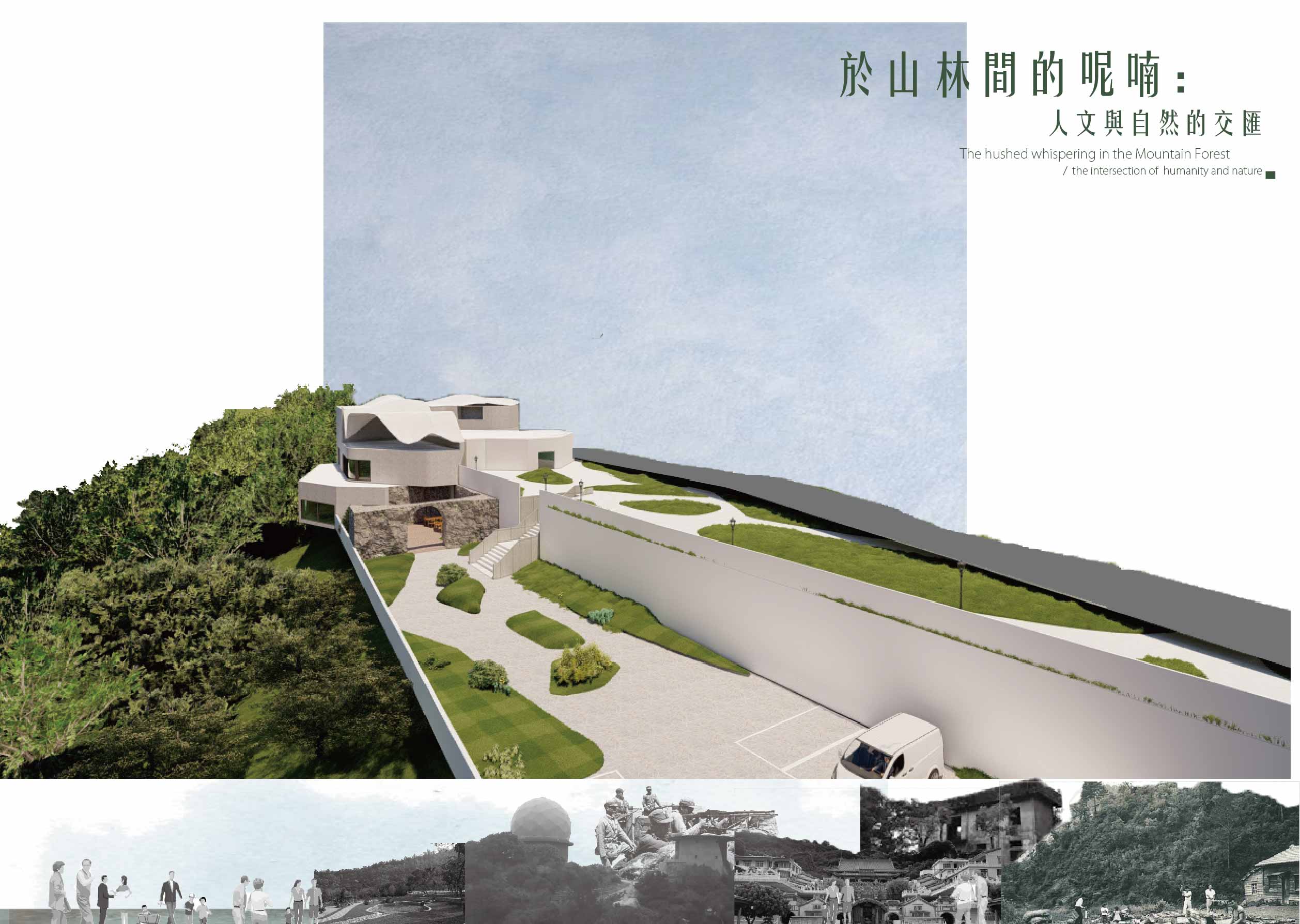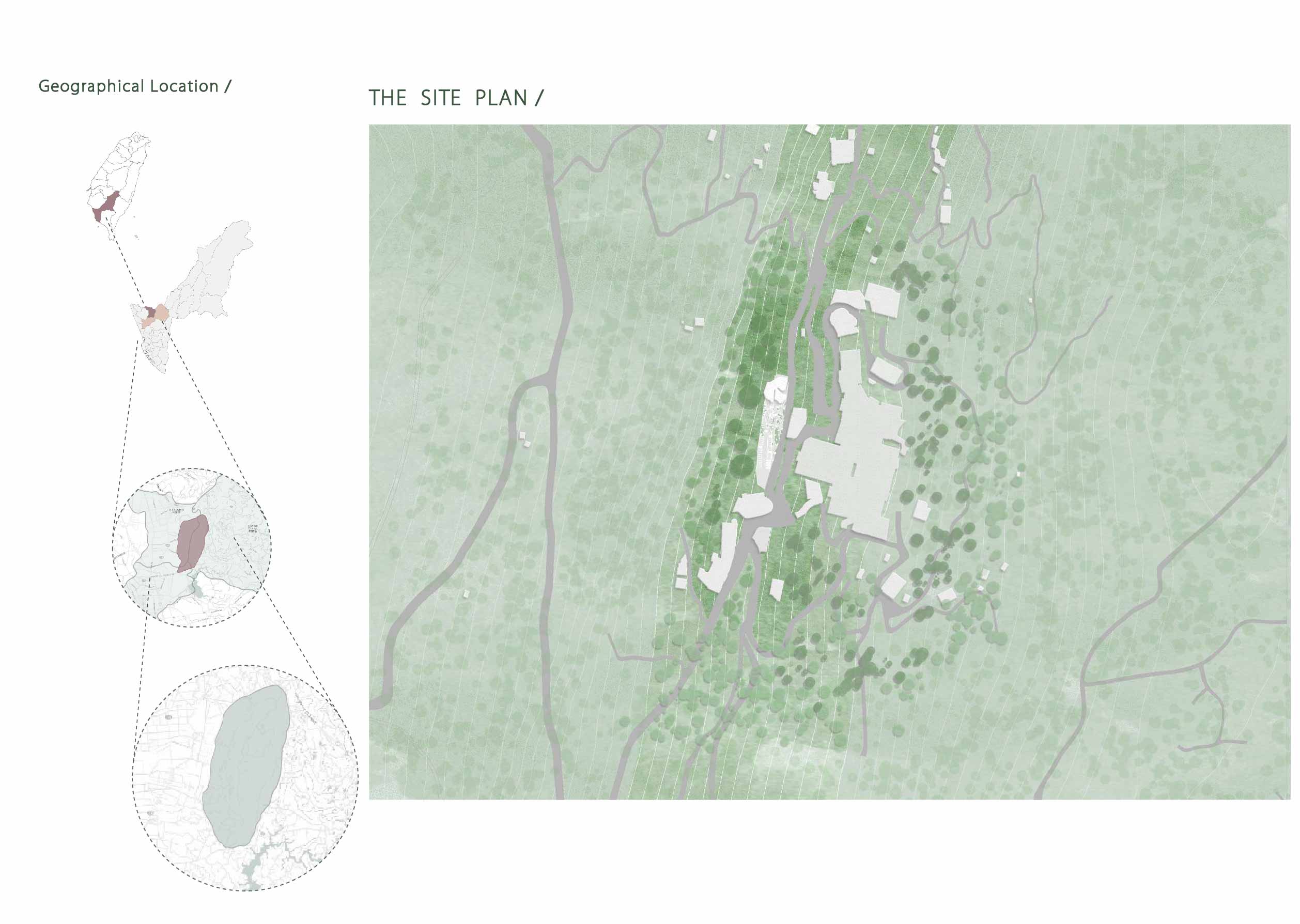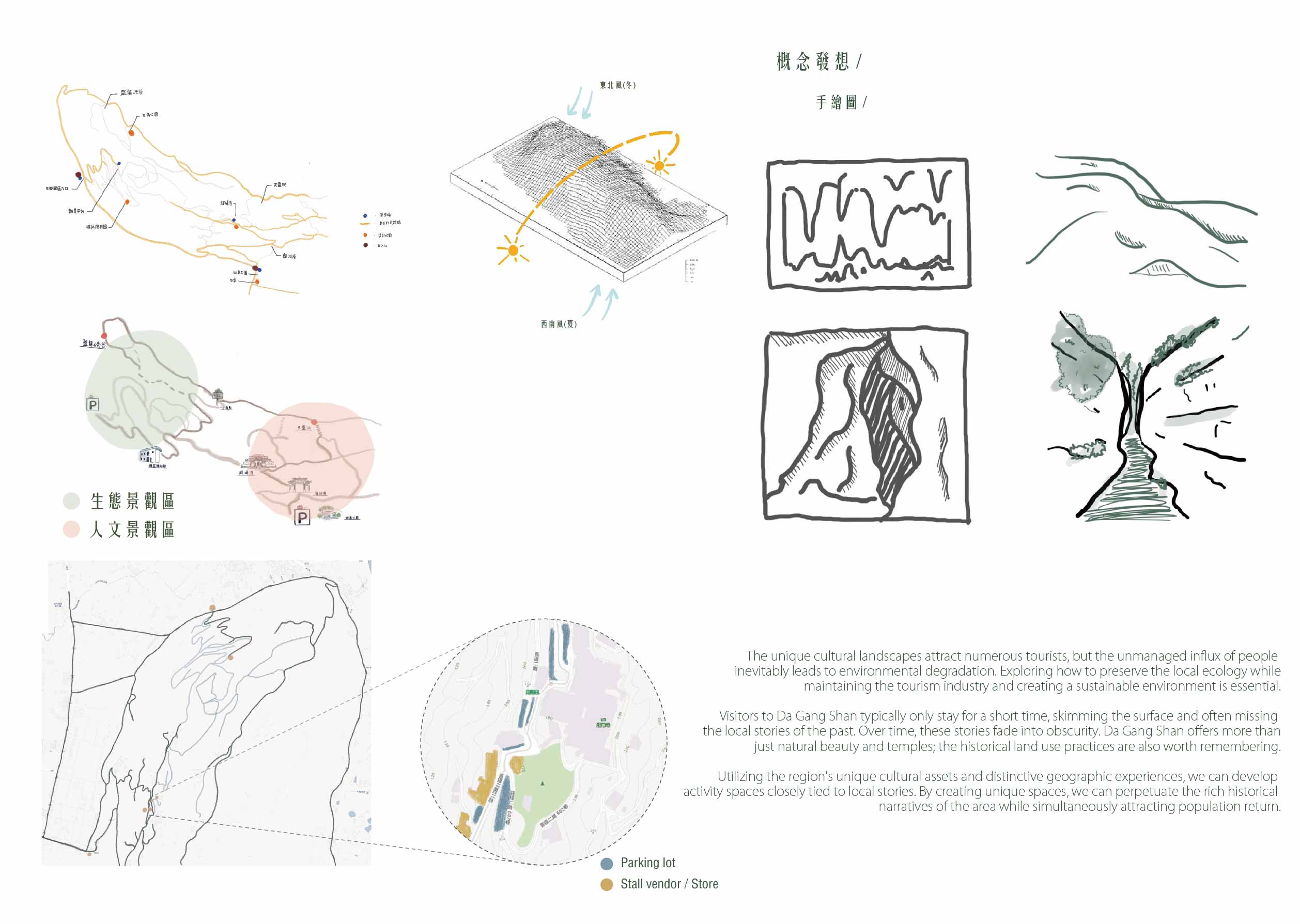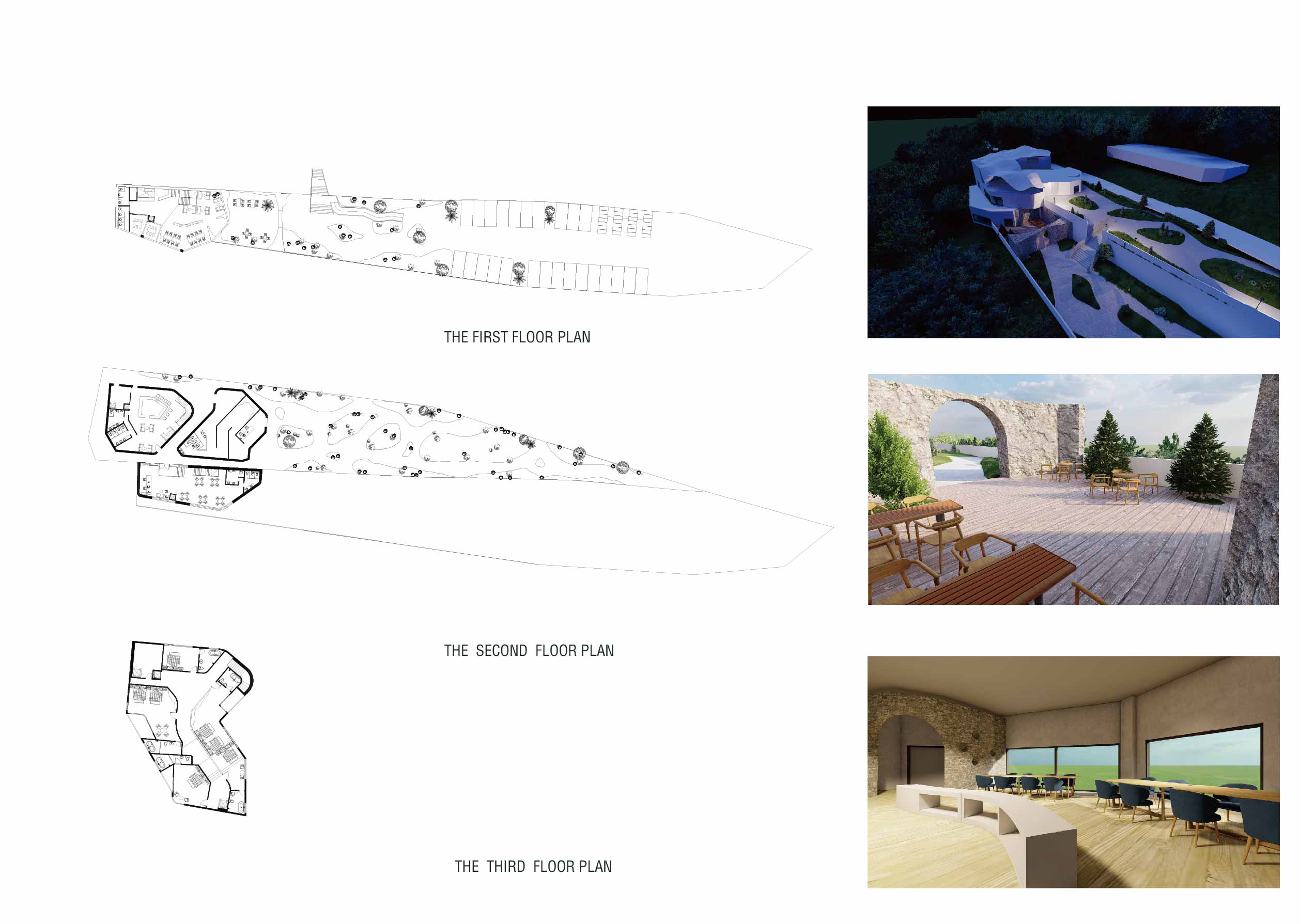於山林間的呢喃-人文與自然的交匯
The hushed whispering in the Mountain Forest





當地獨特的人文景觀吸引眾多遊客前往,但在人大量地使用且未管理之下,自然環境受到破壞是必然的結果;探討如何在維持觀光產業的同時,保護當地的生態,創造永續的環境。
遊客前往大崗山通常只待了一小段時間,走馬看花,過去的當地故事也未曾聽大人們提起,隨著時間逐漸淡忘;大崗山不只有自然可以欣賞、寺廟可以參拜,在過去人們如何使用這塊土地,是值得被記住的。
運用當地獨特的文化資產和特色地理體驗景觀,打造與當地故事緊密相關的活動場所。透過創造獨特的空間,將當地豐富的歷史故事傳承下去,同時吸引人口回流。
於此設立展覽館、休憩等複合式空間,將當地的地理特色與故事融入設計;在室內,人們可以於此休憩喝茶、欣賞展覽或感受空間、環境;室外有綠植景觀,人們可以於此感受自然的環境、療育的氛圍。
The hushed whispering in the Mountain Forest
The unique cultural landscapes attract numerous tourists, but the unmanaged influx of people inevitably leads to environmental degradation. Exploring how to preserve the local ecology while maintaining the tourism industry and creating a sustainable environment is essential.
Visitors to Da Gang Shan typically only stay for a short time, skimming the surface and often missing the local stories of the past. Over time, these stories fade into obscurity. Da Gang Shan offers more than just natural beauty and temples; the historical land use practices are also worth remembering.
Utilizing the region's unique cultural assets and distinctive geographic experiences, we can develop activity spaces closely tied to local stories. By creating unique spaces, we can perpetuate the rich historical narratives of the area while simultaneously attracting population return.
Establishing multifunctional spaces such as exhibition halls and recreational areas that integrate the local geographical features and stories into their design is crucial. Indoors, people can relax, enjoy tea, explore exhibitions, or experience the ambiance and environment. Outdoors, green landscapes provide opportunities for experiencing nature and therapeutic atmospheres.